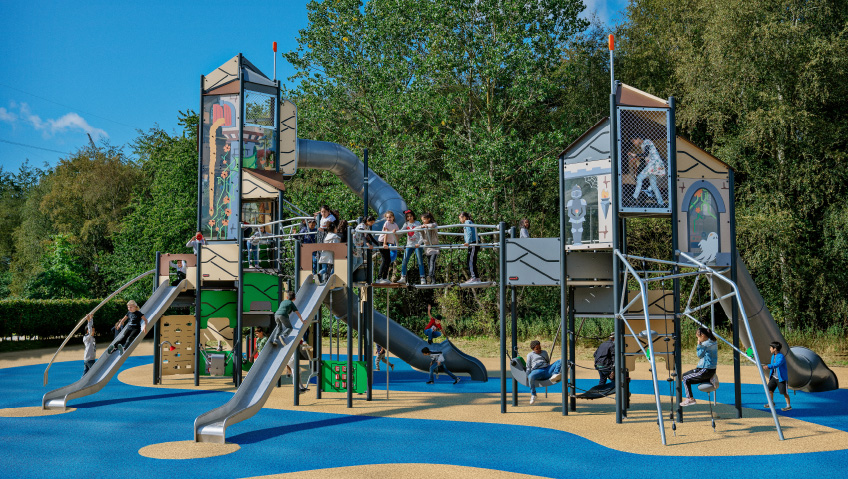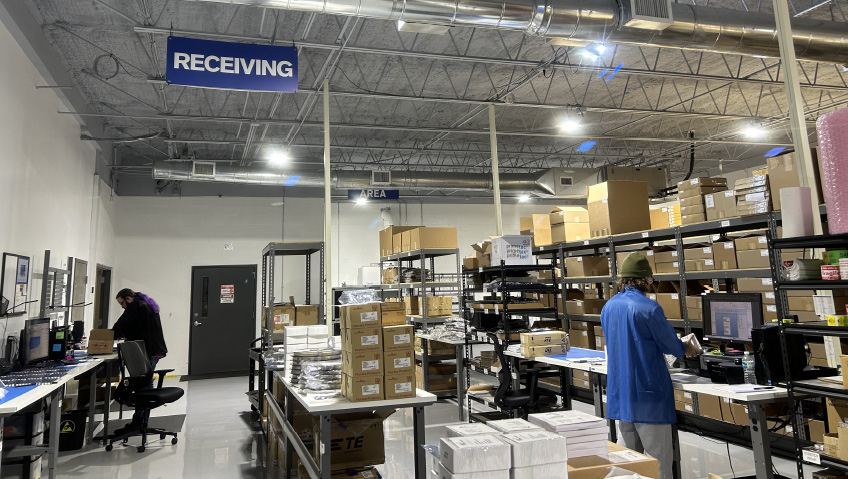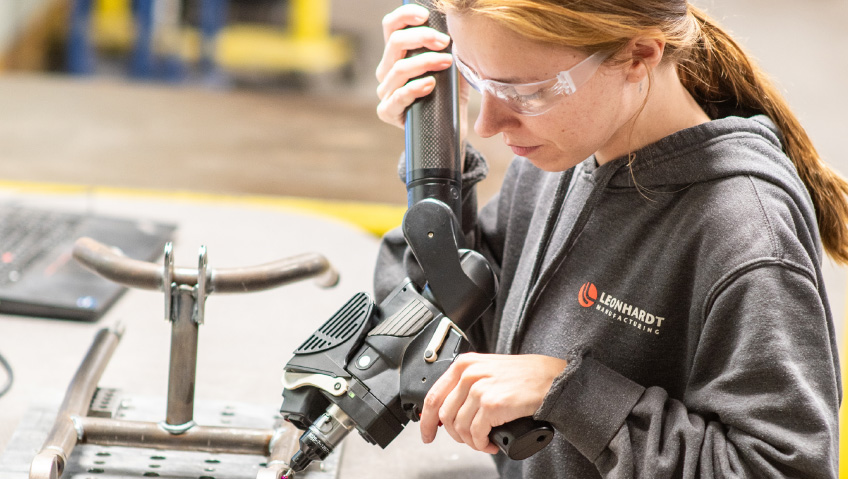“It is a happy talent to know how to play.” – Ralph Waldo Emerson
The International Play Equipment Manufacturers Association (IPEMA) is the voice of the public playground industry. Its goal is to advocate for its members and educate the public alike about the benefits of safer play, the positive implications of safer play on personal and collective development, and how IPEMA certification programs support those ends.
At upwards of 270 member companies strong, IPEMA is a true partner for its members and the broader industry. The organization represents the who’s who of playground equipment manufacturers, surfacing manufacturers and suppliers, and general members who have a vested stake in the industry.
Throughout its history, IPEMA and its partners have contributed to improving playground safety. More falls have been cushioned, safer materials have been developed, and more innovative and exciting playgrounds have been designed, all of which contribute to enriching community hubs where personal and social development take place.
Putting safety first
The International Play Equipment Manufacturers Association (IPEMA) was established in 1995 when a handful of playground equipment manufacturers came together to professionalize the playground and surfacing industry through certifiable quality and safety standards.
The organization’s certification program validates participating products that conform to ASTM standards, and by taking this unified approach to safety and quality in the manufacture and installation of playgrounds, it has created equipment and environments that allow children, families, and communities to develop to their fullest.
“What [ASTM] has done today is created a quality level that customers can rely on, so there are standards that playground equipment manufacturers and the owners of playground equipment should adhere to, and IPEMA certifies that the equipment that its membership is producing is compliant to those standards,” explains IPEMA President Brad Pittam.
Pittam further addressed the certification process: “That group gets together and starts the baseline conversation: what is play, what are play elements, what is an acceptable risk level, what is beyond an acceptable risk level? And then they set a safety standard to it. IPEMA then steps in once ASTM establishes a standard. Then we look at whether it makes sense to certify manufacturers to that standard or to a portion of that standard,” he explains.
Beyond this level of credibility and professionalism IPEMA promotes, it also offers members confidential sales reporting and data aggregation. Next year, the organization is slated to release its first Trends Report to offer insight into market performance and industry trends.
The benefits of play
While trends come and go, the benefits of safer play remain steadfast. From the physical, cognitive, and emotional aspects of development to the ability to process feelings and emotions, playgrounds facilitate individual and collective development, and the value of the interactions that take place on the playground are far reaching.
The playground is a community hub, a meeting place for friends that provides the backdrop for countless adventures of the body and mind, but it is also a place where children learn to be themselves and to interact with their peers, and it is a place where children and adults alike form bonds that will last a lifetime.
The physical benefits of play are the most obvious, as kids who are running, jumping, and climbing are honing their fine and gross motor skills, expending energy, and getting the exercise that their bodies need to grow stronger—but there is so much more to it.
Play is one of the best ways for children to process big emotions and the playground can be a safer place for them to do so. Whether supervised or unsupervised, playing independently or with peers, children build their self-confidence and self-esteem, and learn independence, creativity, judgment, consequences, risks, social norms, relationship building, and conflict resolution on the playground.
As Pittam notes, “A whole lot happens on playgrounds. If it’s well-designed, you’ve got a community hub, and what happens at that community hub is a benefit to many generations of people who experience it.”
Playgrounds are increasingly being designed with this intergenerationality in mind. While play is important for children, it is just as important for adults. It has been said that if you go back and think about what made you happy as a child, it is still likely to bring you joy today.
From Pittam’s perspective, “It sounds like such a basic thing but sometimes people forget to play and sometimes people forget why there is a benefit to playing, so we do spend a lot of time working on Voice of Play and making sure that our membership and their customers understand that there is a benefit to being a kid and goofing around on the playground.”
Voice of Play
Regardless of age, play is vital, and Voice of Play is one of the ways IPEMA communicates the benefits of play. The initiative was founded by past IPEMA President Tom Norquist, one of the original members of the organization, and takes an unbiased, scientific look at the benefits of play using proprietary research.
“Play shouldn’t always be seen as an extracurricular, optional activity, but rather an essential tool in a child’s development,” said Pittam, and Voice of Play provides education and insight into how play impacts the physical, emotional, social, and cognitive development of its participants.
As Pittam explains, “Voice of Play helps push why play is important. Occasionally we push why risky play is important, and I think if you can effectively create an environment where children feel they are being challenged but they are in a safer environment, there is a benefit to the risks and rewards they receive.”
For instance, knowing that falls are inevitable, with equipment and surfacing that is IPEMA certified, the risks of these falls can be mitigated and injuries can be avoided. And, despite the standards being robust, they haven’t stymied innovation when it comes to the manufacture of new and exciting play equipment. Playgrounds are actually getting taller and more exciting, but never at the expense of a child’s safety.
“If you look at how climbers are developed, even how some slides are developed, manufacturers are going wider, some are going taller, some are using natural embankments; our members have done a great job of finding ways to be compliant to the safety standards, providing a very unique aesthetic and a very unique play experience,” Pittam explains.
Innovating the future of play
A great deal of thought goes into the design and manufacture of play equipment and playgrounds. From the location of the playground to the project’s budget and theme, there is a lot to consider. Luckily, IPEMA manufacturers have countless out of the box and custom solutions and surfaces to bring any playground design to life.
From the colors used to the activities included, playground manufacturers are complicit in creating environments to inspire. Playgrounds might be in a child’s community, but to the child they can represent faraway lands and places in their minds.
“Research shows that kids around the world still fantasize about being a king or queen, they fantasize about being a pirate or explorer on a ship,” says Pittam. “When you get themes like that that are consistent around the world and have been for generations, it’s interesting to see how that translates to play, pushing kids to be creative with their minds and how they play.”
Today’s playgrounds are colorful, open-air classrooms that have integrated sounds, textures, and movement to become inclusive, safer, accessible, and welcoming spaces for all, including those with sensory processing disorders. Playground equipment manufacturers are working hard to ensure everyone has the chance to play.
There is no denying the value that playgrounds bring to individuals and communities and for Pittam, “communities are recognizing the value of play in terms of what that means as a social hub getting the heart of the community together. When you have that, it draws tourism and commerce and improves real estate values. Playgrounds tend to be getting larger with more customization, which becomes a challenge for our membership,” a task IPEMA and its members are more than ready to undertake.
Driven by innovation and rooted in safety, the future of play is bright thanks to IPEMA, its members, and the Voice of Play effort. By unleashing a child’s creativity and imagination through physical play in the safest playground environment, anything is possible.






